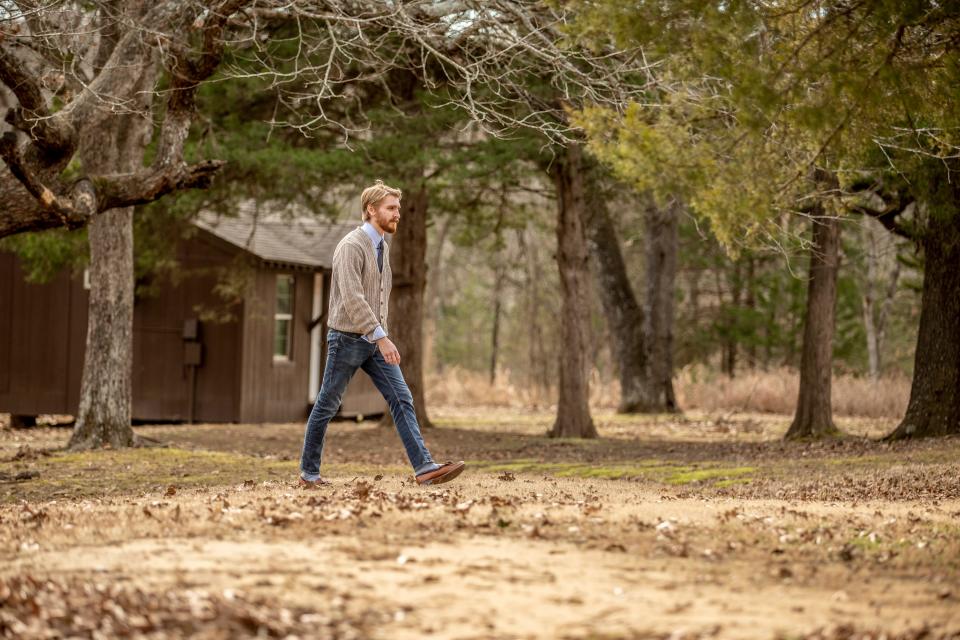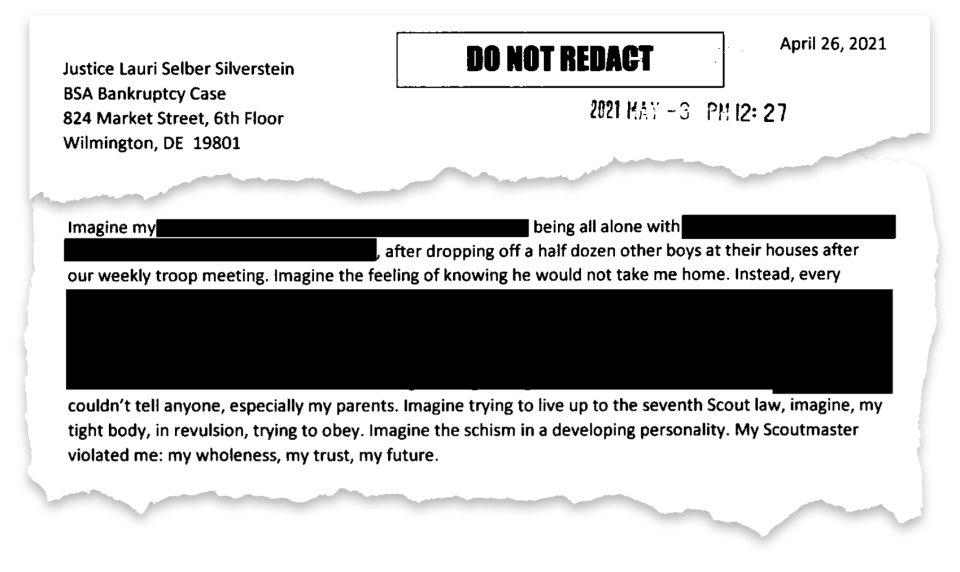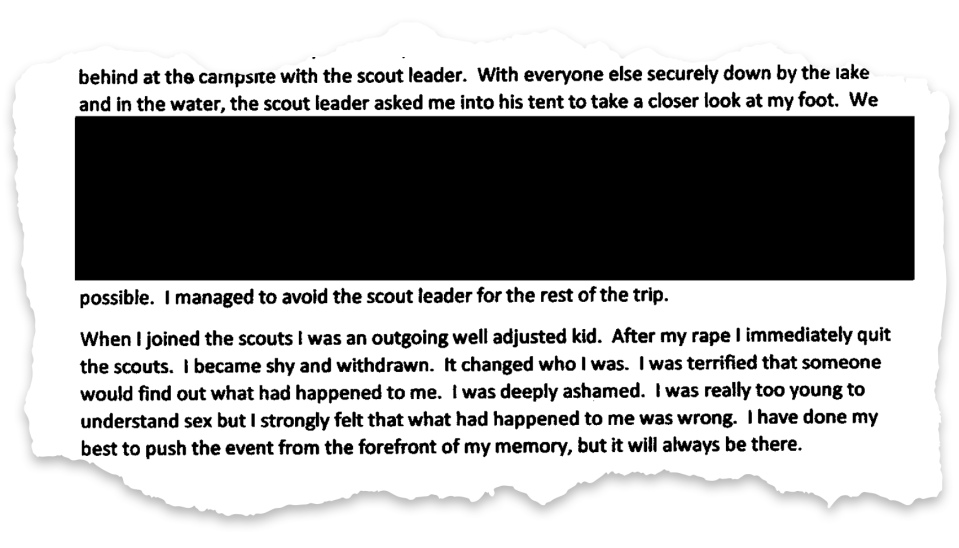In Boy Scouts bankruptcy, which sexual abuse victims will get a settlement? And how much? One person will decide.
Deep in hundreds of pages of legal arguments filed this summer in the Boy Scouts of America bankruptcy case are the first glimpses of some of the most vexing decisions ahead: Which sexual abuse victims will receive settlement money, and how much?
There is little precedent to rely on because although the Scouts case is one in a chain of modern day sexual abuses cases, its scope and legal challenges set it apart.
More than 90,000 claims were filed, many in the final weeks before the November deadline, making it the largest child sexual abuse case involving a single national organization. The largest Catholic diocese bankruptcy cases involved a few hundred claims.
More: Boy Scouts abuse claims may become largest case against a single national organization
Removing duplicates was the first and easiest task, dropping the total to 82,500. The harder work lies ahead.
One person – the bankruptcy trustee – will make the decisions, guided by criteria within a plan from the Boy Scouts that must be approved by all parties involved and a bankruptcy judge. According to the latest plan proposed by the Boy Scouts, three main topics probably will drive the trustee’s decisions: how severe the abuse was, where it occurred and how well the claimants can document it.
The court has gotten a preview of what the trustee will see in letters from thousands of abuse survivors. In graphic detail, they describe being blindfolded and stripped naked at jamborees in the woods of Appalachia, pinned down in showers at camps in the Midwest or raped in tents in the desert while others watched the shadows cast against the tent walls.
They offer specificity that on its face is hard to deny. Within their filings, the Boy Scouts disclosed for the first time that nearly a third of those who filed abuse claims say they were raped, nearly a quarter say they were forced into oral sex, and others cite masturbation or touching.
Countering factors include the advertising blitz by law firms, which contributed to the flood of claims. Thousands of TV and radio ads paid for by law firms urged victims to come forward, using 800 numbers, dangling offers of confidentiality and “significant financial compensation.” One suggested the victims’ fund could hit $1.5 billion.
The Boy Scouts argued the campaign contained false and misleading statements, but the bankruptcy judge dismissed the Scouts’ attempt to stop them, citing First Amendment rights.
How much money will be available for victims once they’re evaluated is another one of many unknowns holding up the case 18 months after it was filed.
In July, the Scouts announced an $850 million settlement with the bulk of abuse claimants and put forth a plan for reorganization. In a footnote, the Scouts acknowledged that would cover only 10% to 30% of the total estimated cost.
The future of that settlement remains uncertain. Last month, a bankruptcy judge struck down two provisions, sending the Scouts back to the negotiating table and pushing back a hearing on the details of their plan to Sept. 21.
A USA TODAY analysis of court filings suggests that as many as half of those who filed claims could end up with a few thousand dollars – a fraction of what their counterparts have been allotted in more than a dozen bankruptcy cases involving Catholic dioceses.
Where you live may affect how much you get
One point of contention involves statutes of limitations – laws that prohibit survivors from suing for abuse after a set period of time. Statutes vary across states, creating a unique circumstance for a national organization such as the Boy Scouts.
In its analysis of the plan, USA TODAY found Scouts’ identified 59,000 – 71% – as potentially too late under state statutes.
The Boy Scouts’ insurance companies balk at paying anything in states where a civil claim would be barred, but the Scouting organization doesn’t exclude these claims in its plan. Instead, it proposes a discount reflecting the breadth of the statute in the state where the victim lives or was abused.
For a rape claim filed in Alabama, where child abuse survivors can file lawsuits only until their 25th birthdays or within two years of the abuse, the base range would drop to $6,000 to $60,000, down from $600,000. For less severe claims, such as touching, the base could fall as low as $750.
An unusual provision in the Scouts’ plan would allow claimants to wait for up to a year to see if the laws in their state change in their favor. Changing sentiments around statutes of limitations have prompted state legislatures to loosen restrictions in recent years; 35 states introduced such bills in 2021, according to a tracker from the nonprofit Child USA.
“That’s not how statutes of limitations work,” said Marie Reilly, a professor at Penn State Law who has studied the outcomes of Catholic diocese bankruptcies.
Reilly said claims are usually evaluated based on whether they would have been viable in civil court when an organization filed for bankruptcy.

Memories, evidence and stamina may affect payouts
Placing a price tag on abuse is a tricky matter, fraught by the vagaries of a largely volunteer organization and memories dulled by trauma and the passage of time. Many of the survivors in the case experienced abuse in the ’70s and ’80s. For some, filing a claim was the first time they’d ever told anyone what happened.
The Scout plan calls for a $3,500 expedited payment, which would require a minimal review. Some experts predicted many will take that option.
Under the plan, claimants who push forward could face a lengthy vetting process. They would have to answer a questionnaire under oath, provide any records they have to support their claim and agree to an interview or deposition, if requested by the trustee.
The questionnaire would ask about abuse suffered, the abuser’s name or description, whether the abuse was related to Scouting, the date of the abuse or the claimant’s age at the time and the location where it occurred.
Claims missing any of that information would be dismissed.
The trustee would be charged with substantiating the information and deciding whether it met the legal definition of “preponderance of the evidence.”
A matrix would help determine who gets how much, with six tiers starting at sexual abuse that did not involve touching – valued at $3,500 to $8,500 – to rape, which could reach $2.7 million.

Similar structures exist in other mass tort cases, such as the asbestos company bankruptcies, where values typically are broken down by health implications of the asbestos exposure.
They also show up in the latest plan filed by Purdue Pharma, which entered bankruptcy in 2019 amid thousands of lawsuits claiming Oxycontin marketing spurred the opioid epidemic. There, payments could reach $48,000 for opioid-related death.
“The tools to assign a value that would liquidate a sexual abuse proof of claim is sort of in its frontier,” Reilly said. “Compare that to asbestos claims. Do you have mesothelioma? What does your X-ray show? The type of evidence that’s evaluated for those purposes ... is just so much simpler than it is here.”

Massive size of Scout case separates it from others
Compared with other matrices or point systems in high-profile sexual abuse cases, the Boy Scouts equation is complex in part because of its massive scope.
USA Gymnastics has yet to reach an agreement with abuse survivors more than 2½ years after it filed for Chapter 11 protection. Of the 510 sexual abuse claims filed against it, 450 allege abuse by a single person: team doctor Larry Nassar.
For the Boy Scouts, tens of thousands of Scout leaders and others could stand accused.
Under the Scouts’ latest plan, the trustee would have access to official documents, including Boy Scouts membership, staff rosters and volunteer lists.
In the Catholic cases, the church had what it deemed substantiated claims and lists of “credibly accused” priests and other clergy. Each diocese adopted its own process and criteria, Reilly said. In St. Paul, Minnesota, for example, allegations were simply run against those lists.
Scouts have nothing that comprehensive. Instead, the trustee could consult the organization’s “Ineligible Volunteer” files.
Parts of those internal documents were used by the organization for decades to track convicted or suspected abusers that became public after a 2010 civil case against Boy Scouts that resulted in a $19 million verdict. Some involved in the bankruptcy case question whether those files are comprehensive or up to date.
The plan proposes that claimants get a higher payout if the person they accuse appears in the ineligible files, which it says would constitute evidence of negligence by the Boy Scouts. Payouts would increase if their abuser abused other children – up to double the amount for a serial offender with 10 or more victims.
That is among many payout scaling factors that hinge on available evidence.
Jason Amala, who, along with his colleagues at Pfau Cochran Vertetis Amala, represents more than 1,000 sex abuse victims in the case, warns that may be difficult to come by, especially in the absence of depositions – sworn statements that would be easily obtained in a civil court action.
“In the vast majority of my cases ... it’s incredibly rare that I don’t eventually find other kids abused by the same person,” Amala said. “But it takes effort.”
This article originally appeared on USA TODAY: Boy Scout bankruptcy settlement will consider severity of sexual abuse

 Yahoo Sports
Yahoo Sports 